Clancy Tucker's Blog, page 101
October 30, 2019
31 October 2019 - REMAINS OF 1925 DAM DISASTER IN WALES
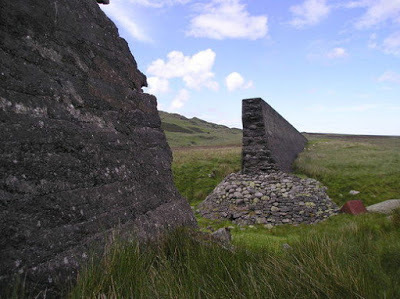
REMAINS OF 1925 DAM DISASTER IN WALES
G'day folks,
Here is another dam disaster. The worst flood disaster in Welsh history might have been a lot worse if it had not happened on movie night.
Llyn Eigiau, a lake at the edge of the Carneddau mountains in Snowdonia, Wales, was the origin of the worst dam disaster in Welsh history. The devastating flood of 1925 is commemorated by a plaque placed on the massive boulders that came to rest after destroying much of the village of Dolgarrog.
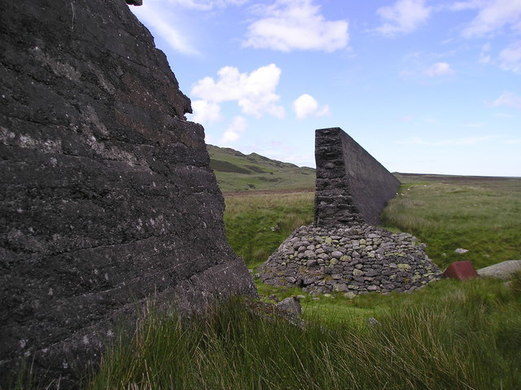
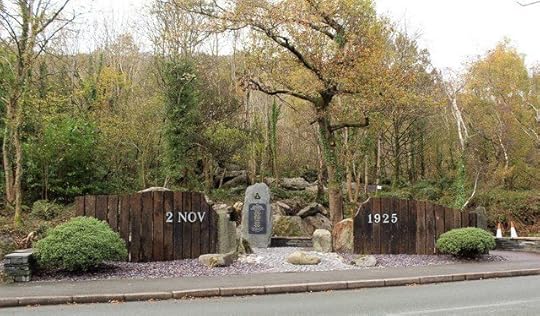
In 1911, a dam three-quarters of a mile long and 35 feet high was built across part of the eastern side of the lake to supply water for the hydroelectric power station in the village and power the aluminum works next to the station. A new tramway was constructed to bring materials for the dam from Dolgarrog.
It is reported that the original contractor withdrew from the project, unhappy that corners were being cut in the construction of the dam. And indeed, his misgivings were realized. In November, 1925, after 26 inches of rain fell in just five days, the Eigiau dam failed. The water flowed down to Coedty Reservoir, which rapidly caused its earth bank dam to burst as well and release billions of gallons of water.
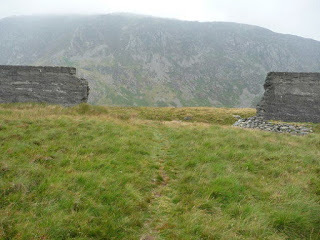
The torrent of water, estimated at over 70 billion gallons, flowed down into the village of Dolgarrog, creating massive damage and leading to the loss of 16 lives. The death toll could have been worse, but it was fortunate that the breach occurred on the night when the local community hall was used as a cinema. The hall was on slightly higher ground, and many of the town residents were safe inside.
The force of water carried some massive boulders (some as heavy as 200 tonnes) down to into the village, which was destroyed by the flood. Gwilym Wyn Roberts, whose mother survived the flood, told the BBC that “Cows were seen hanging from the trees and the aluminum works were submerged under 5 feet of mud.”
These boulders are now marked with a memorial plaque, and the village has been rebuilt away from the devastated area. The remains of the dam are easily accessible on foot from a parking lot about half a mile away from the breached dam wall.
A close look at the remains of the Eigiau dam today reveals that the foundations were insufficient, and close observation reveals large lumps of unmixed concrete. The dam material that can be seen through existing holes tends to break away easily and is clearly badly graded. After the disaster, an additional breach was created in the dam to ensure that water could not build up to dangerous levels. A Parliamentary investigation led to more stringent rules on British dam construction, as part of the Reservoirs (Safety Provisions) Act in 1930.
Today the lake covers an area of about 120 acres (about half the impounded area when the dam was in use) and is only about 32 foot deep.
 Clancy's comment: It sure could have been a lot worse, eh?I'm ...
Clancy's comment: It sure could have been a lot worse, eh?I'm ...

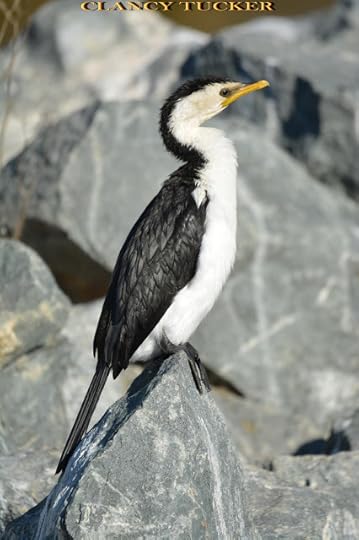
Published on October 30, 2019 11:55
October 29, 2019
30 October 2019 - PHOTOGRAPHS FROM THE 15TH SMITHSONIAN PHOTO CONTEST
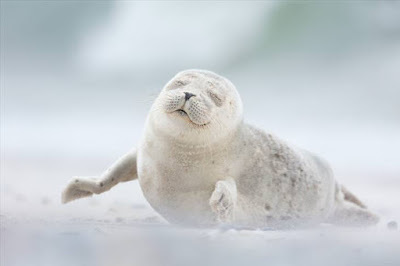
PHOTOGRAPHS FROM THE 15TH SMITHSONIAN PHOTO CONTEST
G'day folks,
Sit back and enjoy some great photographs.
Once again, the Smithsonian Magazine is holding its annual photo contest. With every year that passes, the competition keeps getting fiercer and fiercer, and as you'll see from the photos below, this year's results are absolutely breathtaking. Below, you'll find a selection of some of the most spectacular entries. Enjoy!
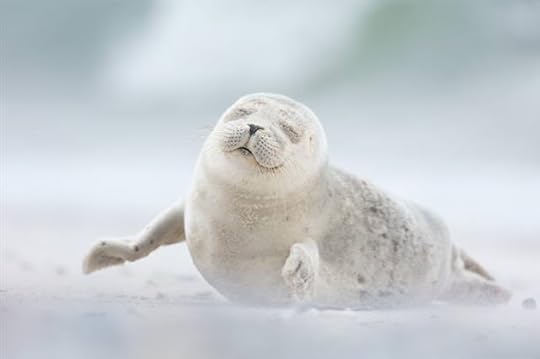
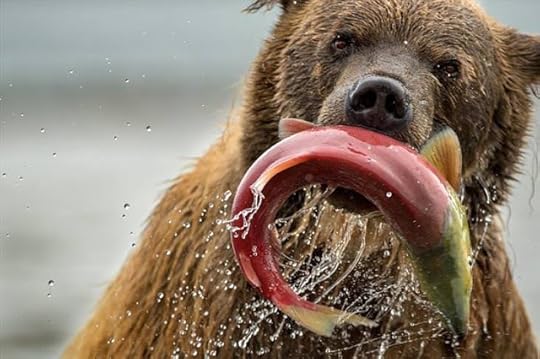
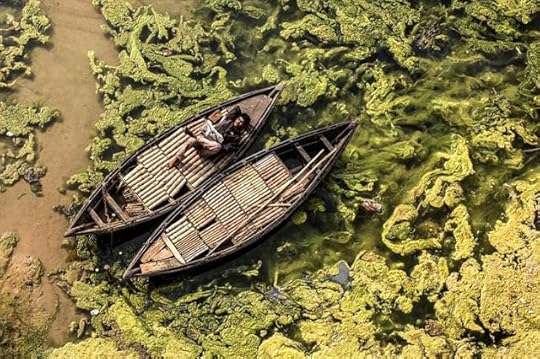
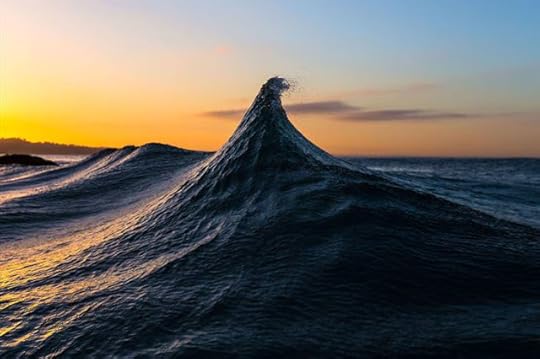

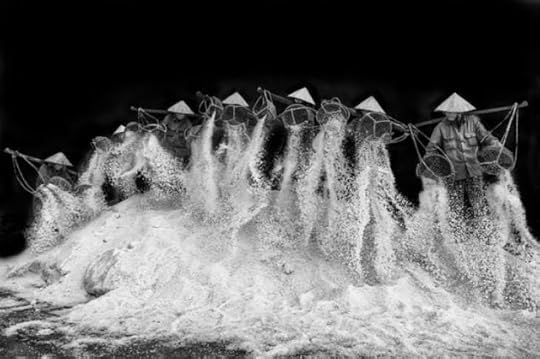
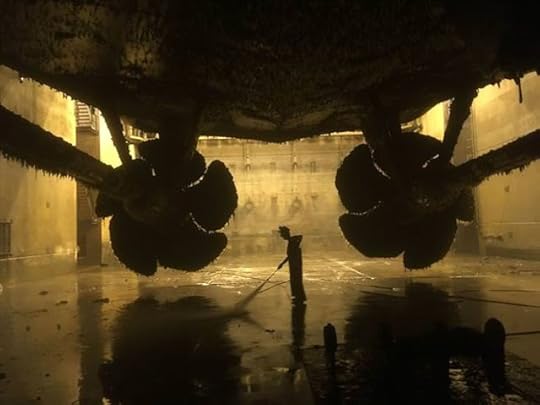
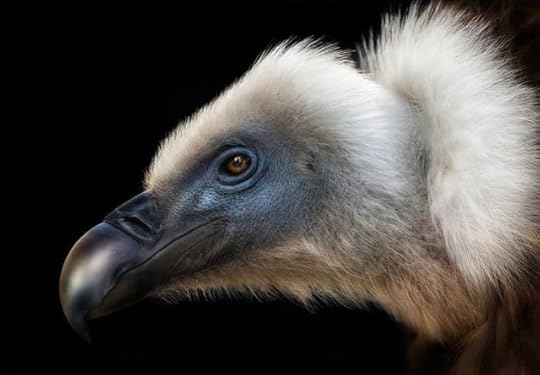
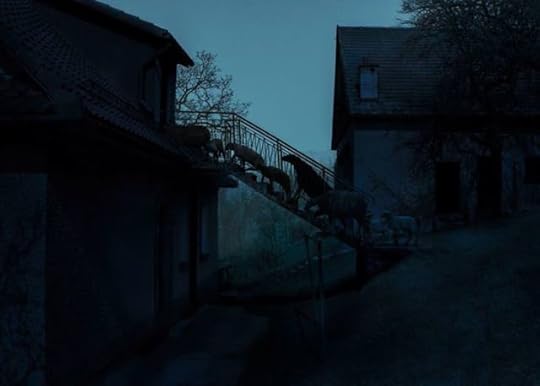
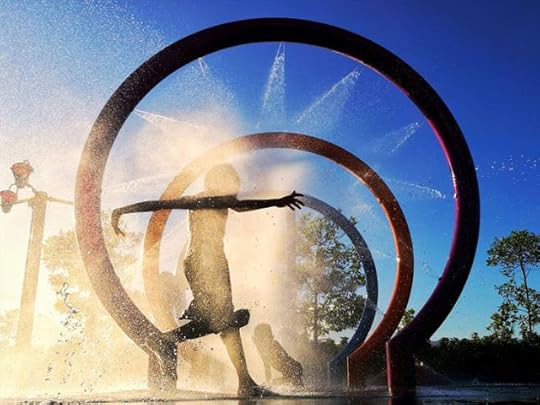
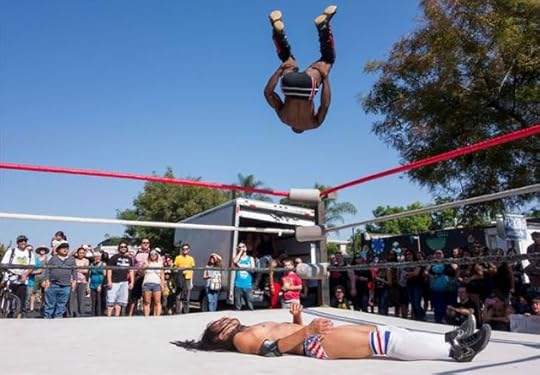


Clancy's comment: Well done! Stunning, eh? Many thanks to the photographers for sharing their work.
I'm ...
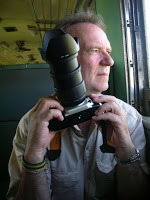
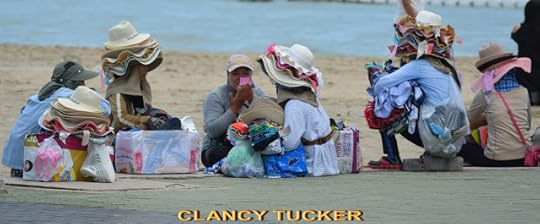
Published on October 29, 2019 12:15
October 28, 2019
29 October 2019 - PREHISTORIC CAVE ART IN INDONESIA
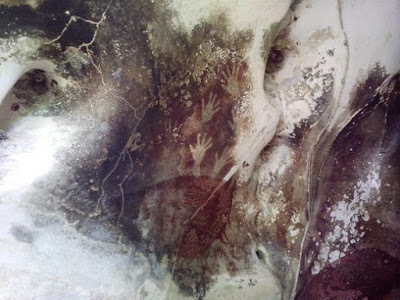
PREHISTORIC CAVE ART IN INDONESIA
G'day folks,These 40,000-year-old stenciled hands are older than the famous cave art in France and Spain. A torch beam finds a stencil of a hand, its ochre outline surprisingly vibrant given its age. Next to it, a sketch of a babirusa—a type of wild “pig-deer” found in Indonesia—shows such attention to detail that the gender of the animal (female) is still clear nearly 36,000 years after its creation. It’s thought to be the oldest known example of figurative art in the world.
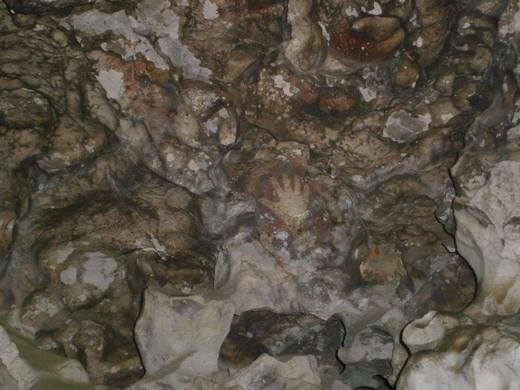 The Pleistocene-era rock art is spread throughout the karst caves within the Maros and Pangkep regions in Sulawesi, Indonesia. Researchers from Australia’s Griffith University used uranium series dating and found that one of the handprints was roughly 40,000 years old. The collection of paintings, which includes the handprint and the babirusa, contains artwork that is slightly older than the images found in European caves.
The Pleistocene-era rock art is spread throughout the karst caves within the Maros and Pangkep regions in Sulawesi, Indonesia. Researchers from Australia’s Griffith University used uranium series dating and found that one of the handprints was roughly 40,000 years old. The collection of paintings, which includes the handprint and the babirusa, contains artwork that is slightly older than the images found in European caves. The rock art’s ancient age shattered the pre-existing notion among many Western archaeologists and historians that the cave art originated in modern-day Europe. While little-known, these Indonesian cave drawings are even older than the famous stenciled caves in France and Spain.
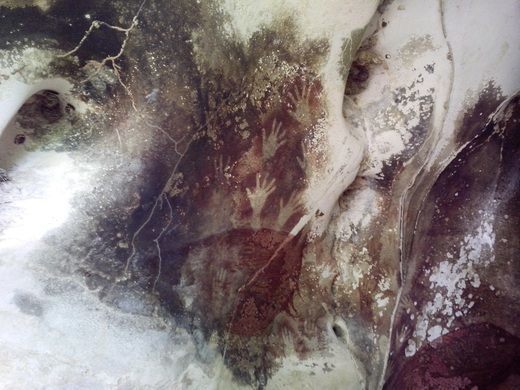
But though it wasn’t celebrated until recently, the cave art wasn’t unknown. H.R Van Heekeren, a Dutch archaeologist, documented the figures and published his work in 1950. However, the paintings were deemed to be of no real significance and subsequently no additional exploration was done until nearly 60 years later.
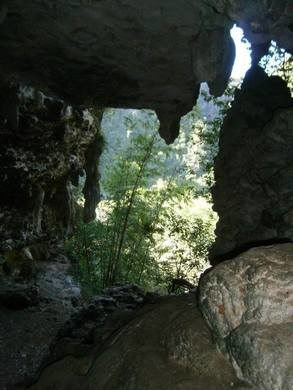
The purpose behind the rock art is unclear. It’s commonly thought that sites with rock art are ceremonial, but there’s no actual evidence to say whether this is truly the case. One theory is that the rock art was an early library cataloging the animals and fish eaten by the people who dwelled here. Another theory is that the stenciled hands may have more symbolic meanings, such as protecting a house, expressing a person’s connection to the place, or attempting to communicate with the spiritual realm.
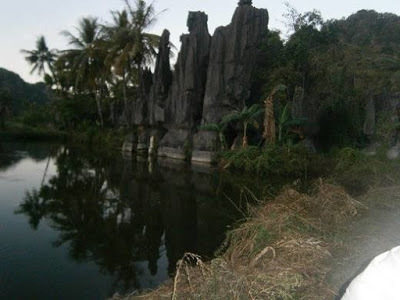
Getting to the karsts requires boating down the narrow river before an hour long walk through rice paddies. A monkey or two may shriek from the tops of the strange palm trees—described by the guide as “shrimpfingers”—before disappearing. Nearby, cows laze and graze under the monolith overhangs and ducks forage for huge snails in the rice paddies.

Clancy's comment: These sites amaze me. However, we have cave paintings in Australia, done by our Aborigines who have lived here for more than 65,000 years.
I'm ...


Published on October 28, 2019 12:41
October 27, 2019
28 October 2019 - CHECK OUT THESE WONDERS OF NATURE

CHECK OUT THESE WONDERS OF NATURE
G'day folks,
Whether you are taking a small walk around the block or traveling to distant places abroad, nature can astonish you in its abilities and creations if you only know where to look. Sometimes nature even does things we didn’t know it could, either with the help of man or without our intervention. In the following pictures, you’ll see what vegetation can do and how powerful the creative power of nature is.
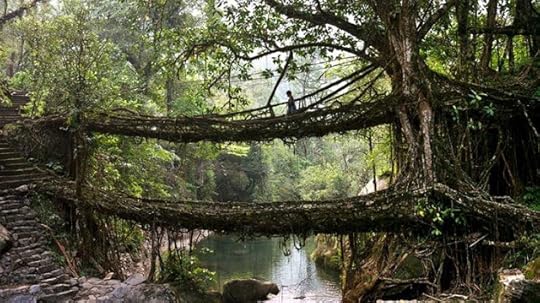
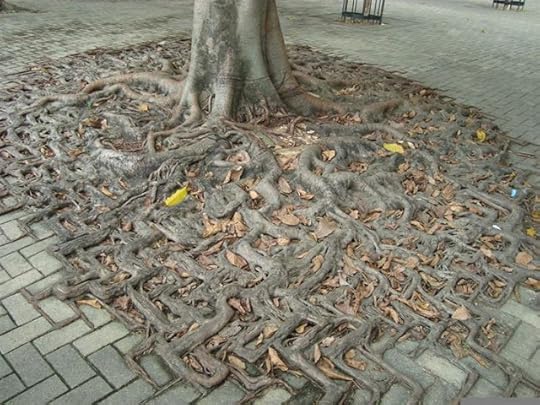
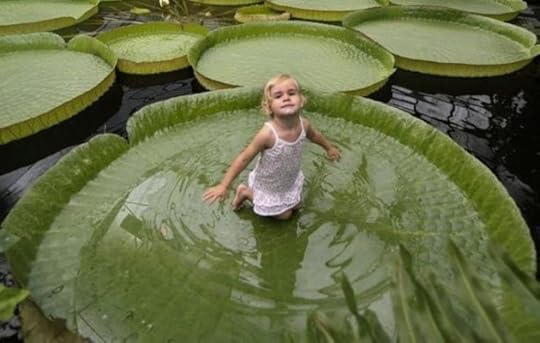
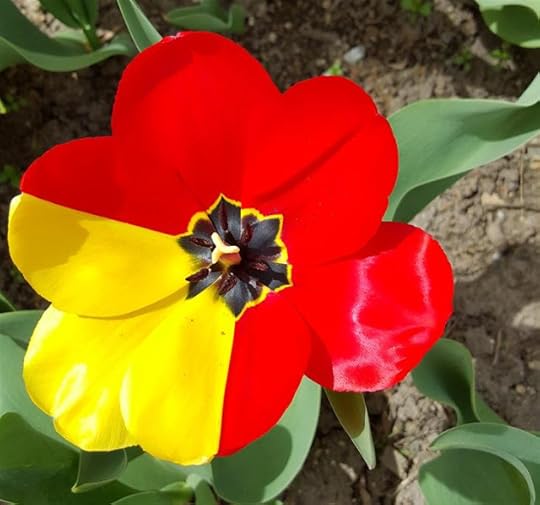

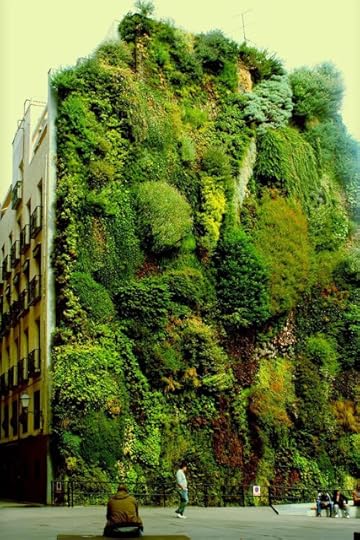
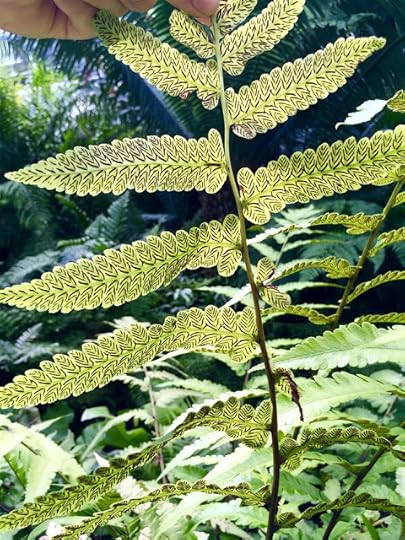
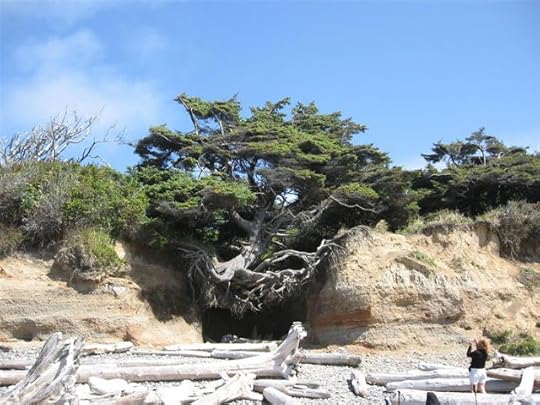

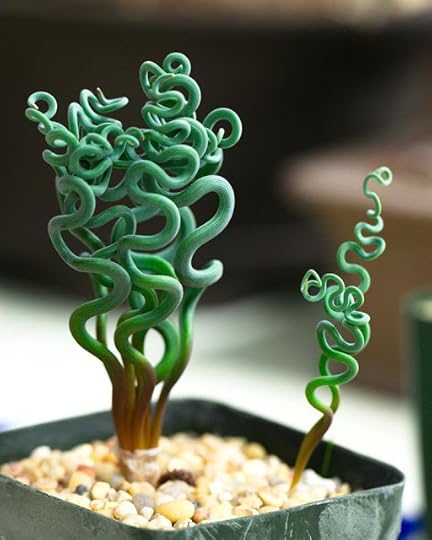

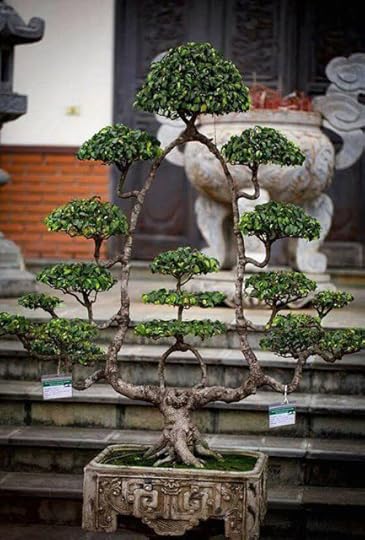
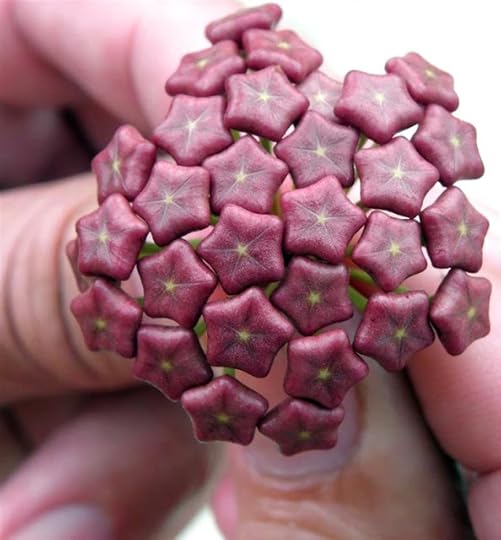
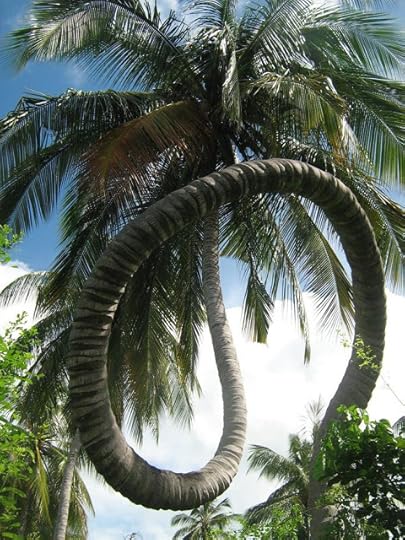

Clancy's comment: Yep, truly amazing.
I'm ...

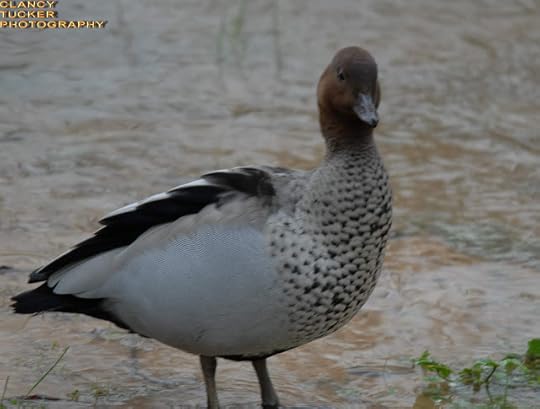
Published on October 27, 2019 12:51
October 26, 2019
27 October 2019 - GLENO DAM DISASTER IN 1923

GLENO DAM DISASTER IN 1923
G'day folks,The sinister ruins of one of the worst dam failures of the 20th century lie in this astonishing alpine setting. In a growing modern nation craving for energy, as Italy was at the beginning of the 20th century, hydroelectric power was a synonym of progress, representing a victory of humankind over nature. Yet in the mountains of Bergamo province in Lombardy, that attempted feat would take a tragic turn.
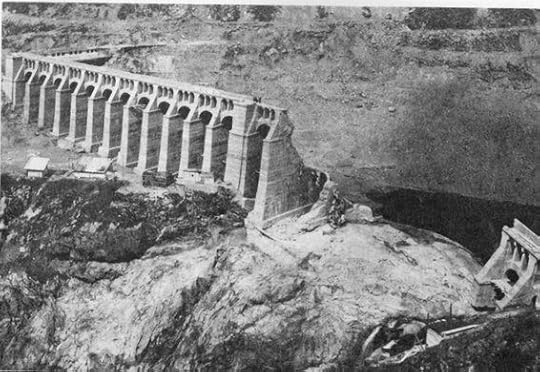
Construction of a hydroelectric dam to exploit the river Gleno in the the Valle di Scalve (Scalve valley) began in 1916, but the project was immediately cursed by poor materials and poor workmanship. On top of that, due to funding problems, the plan changed from the original idea of a gravity dam to a multiple-arch dam while the work was still in progress, resulting in a mixed-type dam.
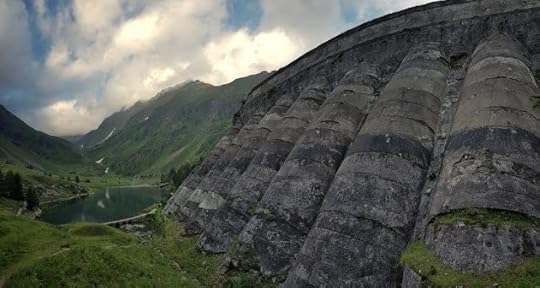
Just after its completion, heavy rains filled the reservoir, and several leaks caused concern among the inhabitants of the valley below.
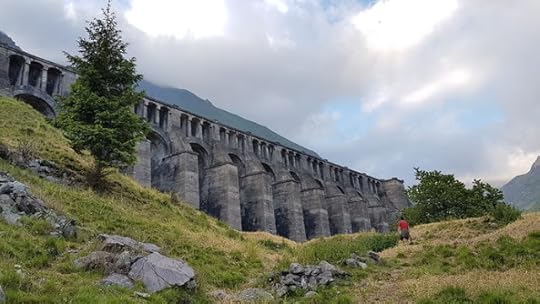
Sure enough on December 1, 1923, at 7:15 in the morning, the tragedy happened. The central section collapsed, causing a mass of 4.5 million cubic meters of water to pour into the villages in the Scalve valley. The official death toll counted 356 lives lost as a result of the flood, as well as massive damage to roads, bridges and buildings.
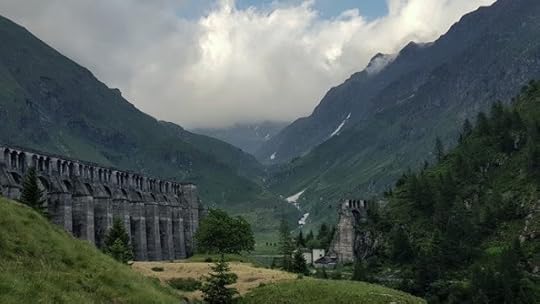
What remains of the dam is a 160-foot-high concrete barrage with a huge, chilling laceration in its central section. The sinister ruins are a stark and surreal contrast with the stunning alpine surroundings.
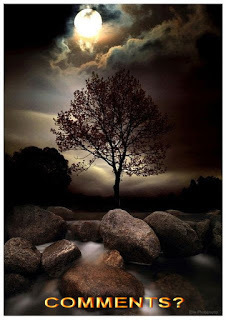 Clancy's comment: Sadly, many who lost their lives were probably still in bed asleep.I'm ...
Clancy's comment: Sadly, many who lost their lives were probably still in bed asleep.I'm ...

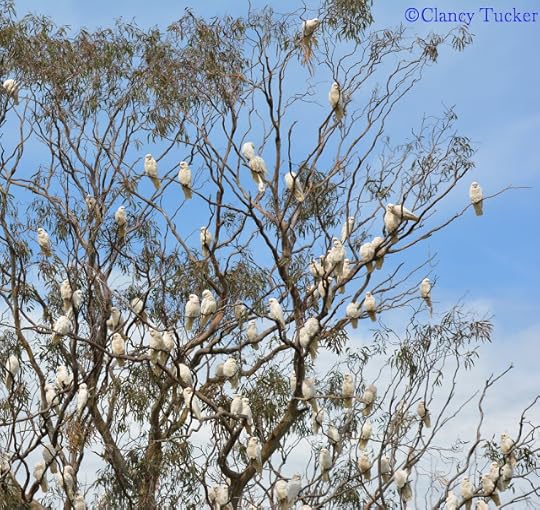
Published on October 26, 2019 12:40
October 25, 2019
26 October 2019 - FONTANELLE CEMETERY CAVES IN NAPLES
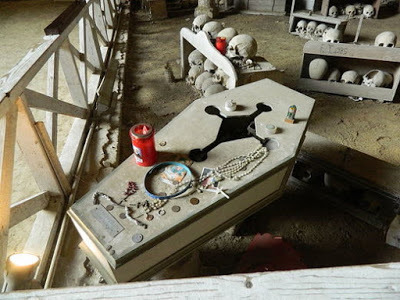
FONTANELLE CEMETERY CAVES IN NAPLES
G'day folks,
Naples is a very interesting place for many reasons. Here, skulls from the plague of 1656 and World War II bombings are united by a cult dedicated to caring for the ancient dead.
Like many ossuaries in Europe, the Cimitero Fontanelle began as a secondary burial ground when the churchyards and crypts began to overflow. Unlike other ossuaries, the skulls of the anonymous dead were lovingly cared for, named, and then asked for prophecies of winning lotto numbers.
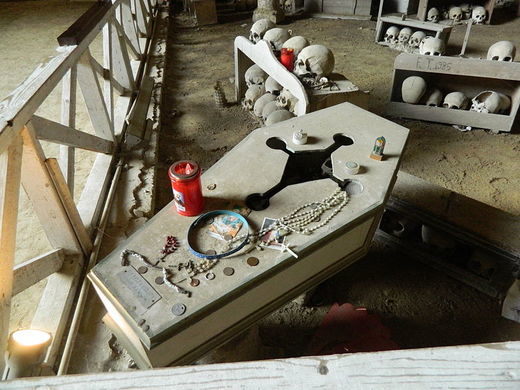
The offloading of temporarily buried remains into this cave on the outskirts of town began during the Spanish occupation of Naples in the 1500s, but the majority of its 40,000 residents came from the devastating plague outbreak of 1656 and smaller cholera epidemics in the 1830s.
The 1656 plague arrived in January, and by August had claimed the lives of an estimated 150,000 people, or half the population of Naples. It took generations for the city to recover from the effects of the outbreak, and the victims died and were buried (or tossed into a cave) under the most chaotic of circumstances, often without last rites, almost always without any grave marker.
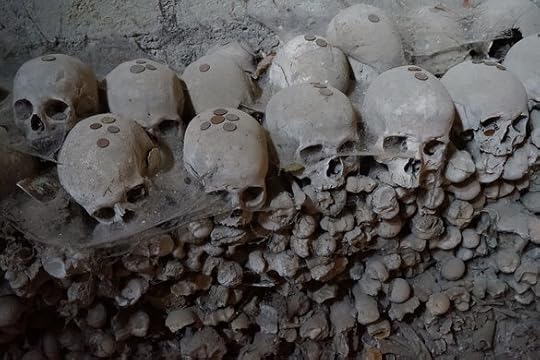
In the tradition of the highly Catholic populace, these poor souls were trapped in a form of purgatory. The Fontanelle was a haunted place to be avoided at all costs, with the only exception being adding more bodies in times of outbreak. Over time, the ossuary became so crowded with haphazardly stacked bones and bodies that at one point during a heavy rainfall, the city was inundated by a flood of skulls and bones.
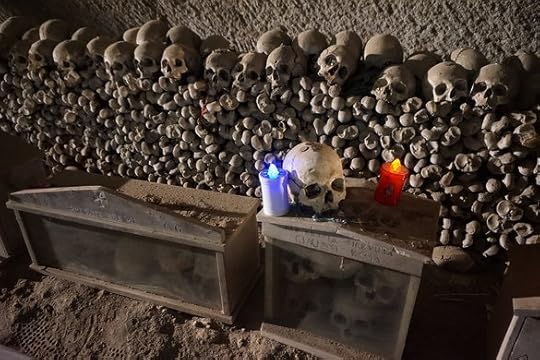
Starting in 1872, Father Gaetano Barbati began the enormous task of cataloging and organizing the anonymous remains. They remained unburied, but were sorted and placed on shelves and racks, in boxes or crypts. As the remains were sorted, volunteers would pray for the deceased as they worked, the beginning an unusual relationship with the dead. Long-dead anonymous skulls were given names by the women who cared for them, who would often return to chat with or ask favors from the dead, placing wishes written on papers rolled up into the empty eye sockets.
This “cult of the dead” sustained itself as a uniquely Neapolitan subculture until the bombings of World War II. Naples was the most heavily bombed city in Italy, and the Fontanelle, along with the other underground spaces in the city, served as a bomb shelter.
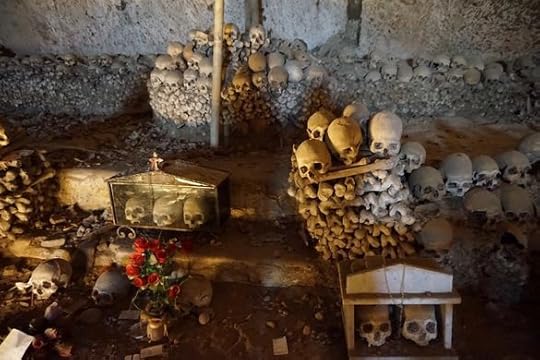
The Fontanelle is a combination of natural caves, tufa mines, and ancient Greek and Roman tunnels. Naples, in the shadow of Vesuvius, is located in the Campi Flegrei, or “Fiery Fields,” an area of intense volcanic activity that has left the area riddled with caves, thermal springs, and craters. The early Greek residents of the area carved and quarried the soft volcanic stone, using some of the underground spaces as their own burial places. The Romans that followed dug networks of tunnels and aqueducts through the hills, often connected with the natural cave systems, all of which leaves modern Naples and the surrounding countryside riddled with underground spaces of all kinds.
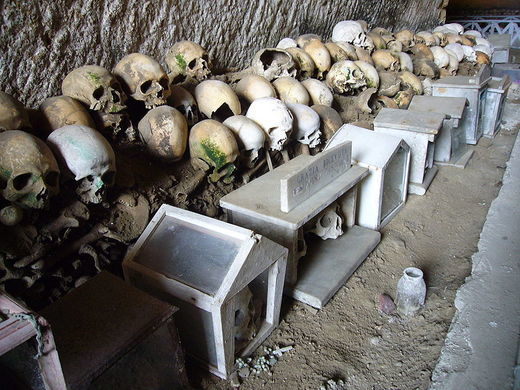
Following the war, the Fontanelle cult reached its height, with women caring for and conversing with the skulls, bringing flowers and offerings, and asking for wishes to be granted. Many skulls were claimed and housed in wooden niches by individuals as personal lucky charms or fonts of prophecy—the most sought after fortune telling skill being a skull with a gift for lotto numbers. The cemetery also became a popular make-out spot as well as a late night haunt for those dabbling in a bit of black magic. In an attempt to sanctify the space, a small church, Maria Santissima del Carmine, was built near the opening to the cave, but was largely ignored.
All of this lasted until the Cardinal of Naples finally ordered the cemetery be closed to end the troubling obsession with lucky skulls in 1969. The cemetery has remained closed, with restoration efforts started again in 2000–2004 to again sort the remains as well as reinforce the structure of the cave.
After years of being off limits, it is now open by reservation.

Clancy's comment: It's extraordinary how things have changed over the years.
I'm ...


Published on October 25, 2019 12:46
October 24, 2019
25 October 2019 - 'BETTER THAN SLICED BREAD' - NEW BOOK RELEASE BY CLANCY TUCKER
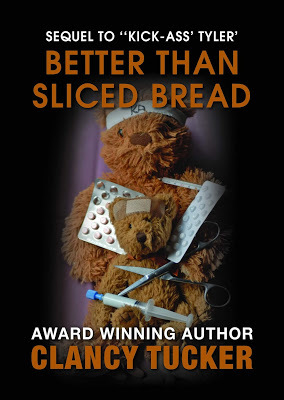

'BETTER THAN SLICED BREAD'
BOOK RELEASEbyCLANCY TUCKER
Sequel to ''KICK-ASS' TYLER'
G'day folks,
Well, after a lot of work, I've finished my latest novel. This book is the sequel to a book I published a few years back, ''Kick-Ass' Tyler'. Due to its popularity, especially amongst young women, I've ploughed ahead at a great rate of knots. Not only, the next two manuscripts in the series have also been completed, so brace yourself. The titles of the next two books in the series are ... 'LIFE SUCKS!' and 'STREETWISE'.

ORIGINS OF THIS NOVEL:
As mentioned above, the first book in this series has been loved by young women; all women. Why? Well, the main character is Sam Tyler - a beautiful young woman who has a big heart, but one who takes no prisoners when she comes across mongrels, bullies and dishonest bastards. In this novel, Sam is seventeen-years-of-age, but a majority of readers would probably assume she has been on earth before. Just ask the people she meets up with in BETTER THAN SLICED BREAD.
Many who have read 'Kick-Ass' Tyler' have asked me if Sam is my daughter. Mm ... I've always taken that as a compliment, and it's probably why I've written more books about her. Not only is she attractive, but she is a high-achiever in sport, has a black belt in karate, and has great ethics and integrity. However, she is also very human, and she discovers her human frailties in this novel.

DEDICATION:
"This book is dedicated to my late brother, Ged. He was one of the best humans I’ve ever met."

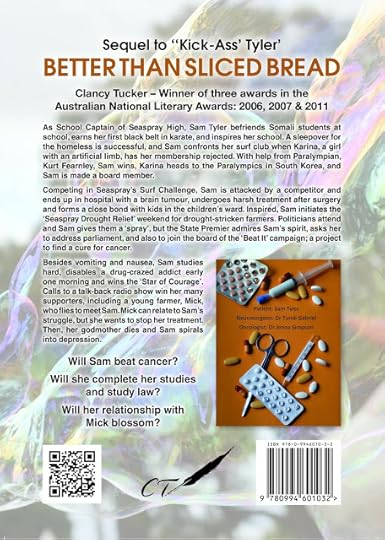
Here's a quote from this new book by one of her former high school teachers who sums her up admirably. Sam nicknamed this teacher Madame Lash at school, but now she calls her Lash:
'Sam, you stand for everything that is good in the world, you protect kids, you take shit from no one, you have a great mind, and you’re gorgeous. Your English essays are excellent because you transfer your thoughts and beliefs onto paper. Most people can’t do that. They write and say what they think other people want to hear or read. In short, you are genuine, Sam. People admire that.’

BLURB:
Clancy Tucker – winner of three awards in the Australian National Literary Awards: 2006, 2007 and 2011
As School Captain of Seaspray High in her final year, Sam Tyler befriends some Somali students at school, earns her first black belt in karate, and inspires her school. A sleepover for the homeless is successful, and Sam takes on her surf club when Karina, a girl with an artificial limb, has her membership rejected. With help from Paralympian, Kurt Fearnley, Sam wins, Karina heads to the Paralympics in South Korea, and Sam is made a board member.
Competing in Seaspray’s Surf Challenge, Sam is attacked by a competitor and ends up in hospital with a brain tumour, undergoes harsh treatment after surgery and forms a close bond with all the kids in the children’s ward. Inspired, Sam instigates the ‘Seaspray Drought Relief’ weekend for drought-stricken farmers. Politicians attend and Sam gives them a spray, but the State Premier admires Sam’s spirit. He asks her to address parliament, and also to join the board of the ‘Beat It’ campaign; a project to find a cure for cancer.
Besides vomiting and nausea, Sam studies hard, disables a drug-crazed addict early one morning, and wins the ‘Star of Courage’. Calls to a talk-back radio show wins her many supporters, including a young farmer, Mick, who flies to meet Sam; sight unseen. Mick can relate to Sam’s struggle, but she wants to stop her treatment. She’s had enough. Then, her godmother dies and Sam spirals into depression. Will Sam beat cancer? Will she complete her studies and study Law? Will her relationship with Mick blossom?

ISSUES MENTIONED IN THIS NOVEL:
Sickness, cancer, community spirit, drought-stricken farmers, kids in hospital, politicians, racism, loyalty, parents, friendships, competition, surf clubs, crime, sport, high school students, courage, disabilities, paralympians, pain, anxiety, violence, courts, law and order, leadership, hospitals, dogs, Africans, basketball, Somalia, refugees, migrants, strength, surf, beach, role models, generosity, winning, losing, heroes, humility, bullies, criminals and romance.
COMMENTS BY PROOFREADERS:
"Another captivating read. Covering a variety of topics as seen through the mind of a very unique young women, with foresight well beyond her years. Incorporating a diverse range of issues facing young people today. This book would do well in the school curriculum, it encourages empathy and opens a diverse range of modern day topics, along with solutions. Holds your interest till the end." - Kaye Jones

“Sam is an inspiration to both young and old. She shows friendship and compassion to everyone, despite her own problems. The story will make you shed a few tears in parts, but these are outweighed by her courage and positive outlook on life. Sam is able to bring together people from all walks of life - struggling farmers, refugees and people from her own seaside town. Sam shows how incredible things can happen when whole communities work together. A very enjoyable read for anyone, no matter what your age.” - Jean Laws

"This is the exciting and engrossing story of Sam Tyler as she juggles life - threatening cancer, final year studies, and menacing attackers. While at the same time she encourages the dreams and needs of other people, and a drought-stricken community." - Elizabeth Longham

Clancy's comment: Okay. There you have it, but I certainly suggest that you read ''KICK-ASS' TYLER' before you begin this book. It will give you some great background information about Sam.
Now, don't be shy. Grab a copy for yourself, your daughter or granddaughter, and grab a copy of ''KICK-ASS' TYLER' whilst you're there. Oh, this book is not just for females. You men will find some serious reminders in this book. Trust me, this book will command your attention. It is particularly directed at any of you who have lost a loved one through cancer.
So, head up to the top right-hand side of this page and grab a paperback or e-Book. You will not regret it.
Love ya work, Sam!
I'm ...
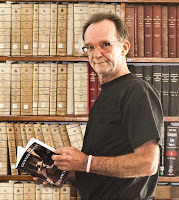

Published on October 24, 2019 11:49
October 23, 2019
24 October 2019 - KIM WHEELER - GUEST AUTHOR, PHOTOGRAPHER AND POET
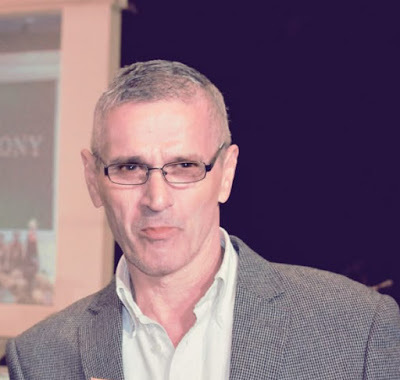
KIM WHEELER - GUEST AUTHOR, PHOTOGRAPHER AND POET -
G'day folks,
Today, I interview a very talented and generous man with whom I've spoken many times via skype from the UK. Kim is now living in Indonesia and we are still Skyping.
Welcome, Kim ...

1. Tell us about you and what you do.
I was born in London in July 1954 and was dumped by my birth mother, no known father, spent formative years in children’s home which left an indelible mark on my life and made me stronger for the experience and not weaker. I am a published author of twelve books though three are no longer available. I am also an award-winning photographer (which changed my view on mother earth, seeing her utter beauty which I hadn’t really noticed before being too busy with work). I rescue dogs which I have now done for twenty-five years and just completed a re-written version of Rescue Dog Rescues Man with a shiny new name ‘When Your Best Friend is a Dog.’(out soon) I have worked in many different jobs, failed selection for the army three times (blessing in disguise) worked in petrol stations pumping petrol, gas fitter, lathe turner, professional decorator, HGV Class One driver, short spell as Driver Bodyguard and quite a few dead-end jobs. Now after a succession of injuries and near death took early retirement and became a writer and a published author of several different genres of books including children’s, award winning poet, biography and photography books but now I teach English at UKRI University in Bandung, Indonesia which is without doubt the most fulfilling and enjoyable job I have ever had and it’s something I always wanted to do but always thought that I was under qualified, how wrong was I?? I also give my time for free.
2. What was the happiest moment of your life?
I got two Clance…being born and getting married
3. What was the saddest moment?
Losing a brother to Cancer and putting four of my rescue dogs to sleep…and knowing I will have to put more of these faithful once unwanted and unloved friends to sleep, gets me every time...but however painful this is for me, I won’t stop rescuing.
4. What surprised you most?

5. What was your greatest disappointment?
In short Clancy, humanity for being too weak, too feeble to fight and too apathetic to make the changes this world needs, rather relying on others to do their dirty work for them while they sit and shout at the television about how wrong the world is but if this is a personal question about my greatest disappointment then I would have to say failing the army because I knew at a young age that I needed strong discipline, first I was too young to join and the other two times being just not physically fit enough. It would have saved me from myself and I certainly wouldn’t have accepted that joint that someone passed me those many years ago. I needed to toughen up not fail myself time and time again.
6. Who did you misjudge? Why?
Friends, hoping for a lifetime of closeness and brotherly love only to feel utterly betrayed when my life changed (for the better) after a series of injury’s and life-threatening illness.
7. What or who was your biggest challenge?
Myself, trusting, finding love, accepting my life and not being so angry at it and forgiveness of what appears to be so many but my expectations of love was destroyed and trying to fill that huge void from birth was always going to be an enormous struggle, happily I got there in the end but it took a lifetime of pain to eventually find.
8. What has been your biggest regret?
Perhaps giving in too easily and happily jumping thru fire in order to be accepted and wanted.
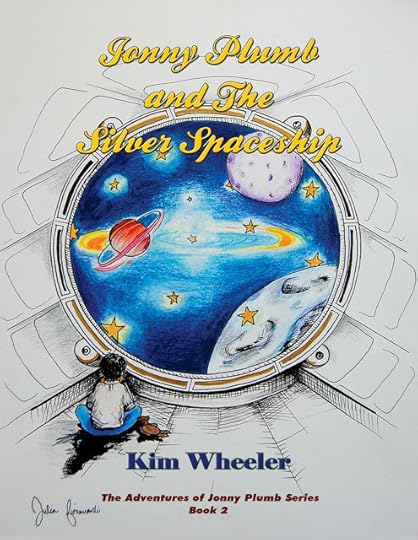
9. What would be your dying comment? Why?
To my wife, ‘to continue your work as an ambassador for good and for God, to become a world leader and the first female Muslim President of Indonesia, use my strength to help the weak and to carry on our stoic work with the frightened, the poor, the unwanted and unloved, I love you to eternity Zora, you are and always will be, my light in dark blue oceans.
As for why Clancy…I was a broken man struggling to see the point in living at all with myself whose dogs were my only true friends, who lived alone and had very few honest and trustworthy friends, this lady helped me by loving me for who I was, for understanding and accepting my physical and mental scars and I carried many, never ever thinking or believing I was a bad person and she was right. I wasn’t but I felt I was.
10. Who or what stunned you the most?
The power of silent prayer for others needs and not your own, it works, my God does it work.
11. What would you like written on your tombstone? Why?
Faithful Husband and father of two, animal lover, rescuer, teacher and friend.
As for why Clancy, six or my best attributes if I am to be honest.
12. Who would you rather have not met? Why?
There’s quite a list here of people who have hurt me beyond reason but I have learnt that without these bad people I wouldn’t have grown so strong but if I have to name names then I would say those who so physically and mentally abused me during my childhood. No child deserves that.
13. Who were you most envious of? Why?
Jimi Hendrix...need I say more
14. Who did you forgive – for doing something you never thought you’d forgive?
My birth Mother Kathy (who at the time of my birth was a prostitute) and the man who paid to have sex with her resulting in me. It’s difficult to forgive such cruelty but I wasn’t prepared to carry even more scars with me for the rest of my life and forgiveness for me was closure but believe me when I say, it was not easy. Truth is in her abandoning me was actually the best thing that could have ever happened even though life after 5 days old was hell in a children’s home but certainly better than it would have been with her, and without the sperm donor, who doesn’t even have a name I would not be here, so grateful for small mercies…
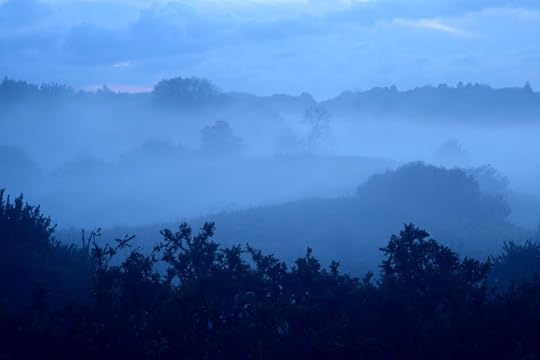
15. What was your greatest moment in your life?
Having the balls to see my life as it was when I was at the bottom of my very own shit pit, and find the inner strength to climb again and again out of this cold dark lonely hole to become who I am today, by having the balls to completely change absolutely everything in my life, moving away from so called friends, giving up the drugs, the alcohol, the bad volatile attitude, and moving country after I was healed sufficiently to start life anew.
16. What is your greatest achievement?
Rescuing and continuing to rescue dogs because the loss is unbearable and knowing that one day, I will have to say goodbye is without doubt the hardest emotion that I have ever faced.
17. What personal traits would you like to have in your next life?
Parents would be nice Clance…sorry I digress, I think better, wiser stronger, decision making to listen to me and not fall in to the trap of believing others
18. What advice would you give to world leaders?
You are NOT God…Remove your ego and be prepared to listen and to be wrong when you try to change the world.
19. What advice would you give to parents today?
Love and never-ending patience, and never ever hit a child.
20. Who would you choose to be stuck on a desert island with?
My wife...
21. Have any heroes? Why? Who?
John, Paul, George and Ringo, my childhood friends thru unfriendly days and nights who were the most incredible talented bunch of guys you could wish to have as heroes and no getting naked like todays so called celebs, no bad attitudes or foul language, just four guys who wrote and performed some of the best music ever written and I still listen to them most weeks some fifty years later.

What are the greatest legacies you will leave behind?
No matter how many times you fall down never ever give up and never ever give up being a good guy and help anyone/anything who needs you’re support from the poor starving to the abandoned animal who needs it without expecting anything in return.
What’s lacking in the world today?
LOVE & PATIENCE
22. Any pearls of wisdom for the rest of us?
If you have more than you need then, give and donate anything that you really don’t need.
23. What would be the last sentence you ever write?
‘Wow, what a journey.’
24. What inspired you most?
Failure…
Below is one of my favourite quotes
Q, what’s the secret of success?
A, right decisions
Q, how do you make right decisions?
A, experience
Q, how do you gain experience
A, wrong decisions
25. Who or what made you laugh the most?
British sense of humour/comedy such as Monty Python, Morecambe and Wise, The Two Ronnie’s and more lately Frankie Boyle.
26. What would be your top three chosen careers in your next life?
Formula one racing driver, Author, Astronaut.
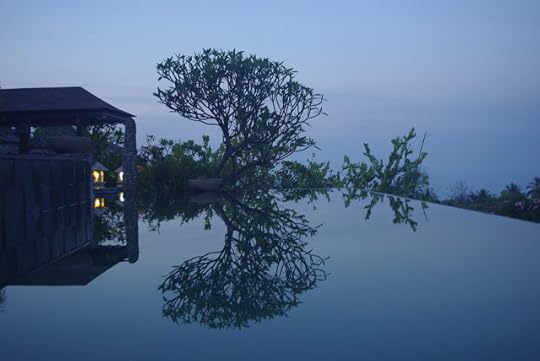
27. What is your prime focus in life today?
Hopefully to help others understand the importance of how pets are so intrinsic to the wellbeing of the sad, broken, injured or those who suffer with mental health issues including PTSD as I know from experiencing all the aforementioned how my dogs changed my life. To continue giving my time for free in teaching students life skills and English and to continue being one of the good guys for others to emulate and to continue being a good husband, father, animal lover and dog rescuer.
28. Do you have any fear of doing something wrong?
No, not really as I have after many years of getting so much wrong finally taught myself to wait, to be patient, to breath and to not rush into any rash decisions.
29. If or when you reflect on your past, can you identify any world events that you believe had a significant impact on you?
Most wars including Vietnam, the lies surrounding 911, but especially the lies to take the USA and the UK to war in the Middle East and the death of Jimi Hendrix and John Lennon I don’t often do tears but when these two died, I cried.
30. Do you think one can live a purposeful life without knowing the meaning of life?
The meaning of life is our own perspective of reality and as none of us really know the answer to that, my response to this clever question Clancy is, ‘yes, of course’.
31. From your perspective - what is the way forward for the world?
Love Mother Earth more, respect the earths climate is changing and adhere to the rules of life as we will never ever win any battle against nature, stop the cruelty to all animals, become vegetarian, do not vote for lying, selfish, greedy politicians be man enough to make changes to self and others, do not be so easily led and fooled and stop the incessant need to go on safari trips in order to take selfies, and leave wildlife alone and to stop destroying the worlds heritage sites just so you can share your photographs on pithy sites like Facebook/Twitter and Instagram just for a puerile ‘like’ and to CLOSE all circuses and the barbaric treatment of animals in bull fighting and bull riding and finally for the NRA to wake up and see what damage you are doing to yourselves and the USA
32. Imagine that you were given a chance to live again, what will you do first and what will you do differently?
Hopefully take on all that I have learnt from this incredible journey into my next life and just try to improve myself in becoming a better person, to be more patient, more understanding, to give more than I take or need. There’s lots of things that I didn’t have in this life, like my parents so having the love of a Mother and Father would be a bonus but I did pretty well without them in this life.
33. Do you have a bucket list? Tell us more.
Not getting any younger Clance, and the scars hurt so anything physical is now out of the question though I would have loved to have swam with a whale, skydived and climbed Everest but that’s gone now so I would love to write a best selling book and donate the money to those who need it most and perhaps paddle alongside some friendly dolphins
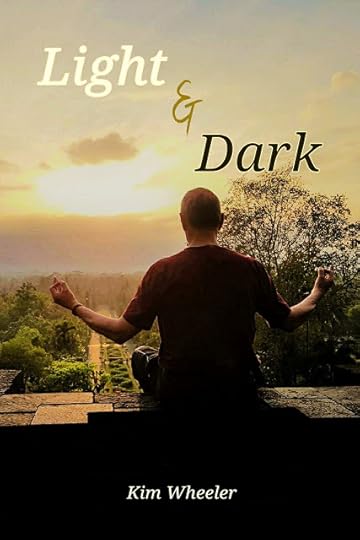
34. Any great claims to fame?
None really but going from an orphanage, an uneducated, non-speaking, broken child with just hope in his eyes to have a better life to finally become a teacher of English and life skills in UKRI University takes some doing. I am proud of that ‘small for others but large for me,’ achievement.
35. Anything you’d like to add?
Yes, I would like to say a special thank you to Clancy, writer, award winning author and photographer who over the years has become as close as a brother to me - a wise, generous, bloody funny, bald, forthright, angry as a Philips screwdriver, no nonsense man, who takes absolutely no shit from anyone, for not just being a bloody close, supportive and loyal friend, but for giving me the chance to again appear on his blog.
Clance you are a diamond…, it’s an honour for me to have a friend like you in my life...live long and prosper…love your work…

WEBSITE
INDONESIAN TV INTERVIEW

Clancy's comment: Well, folks, I did have the pleasure of writing my thoughts on the back cover of Kim's book, 'Light and Dark', and I thought it was worth sharing. My words sum things up fairly well.
LIGHT & DARK REVIEW
Kim Wheeler is the master at expressing his inner thoughts and feelings in words. He is also a great photographer and poet. With seven published books to his name, he continues to impress me. His poetry is often gut-wrenching and brutally honest, but I admire any male who can express himself so frankly. It shows a personality that is striving to be the best person possible.
Kim’s photographs also show an exceptional talent. As a published author and photographer myself, I can relate to the connection between words on a page and taking photographs.
This is a thought-provoking book that has taken great courage to compile.
Clancy Tucker
Award-winning Australian author and photographer.
I'm ...

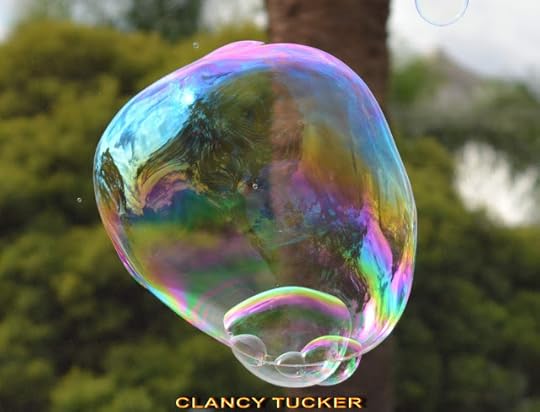
Published on October 23, 2019 12:23
October 22, 2019
23 October 2019 - THE FASCINATING LONDA BURIAL CAVES IN INDONESIA
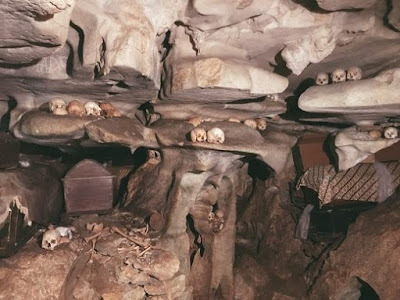
THE FASCINATING LONDA BURIAL CAVES IN INDONESIA
G'day folks,The unique funeral practices of the Toraja can be seen here with graves carved into caves and hung off cliffs. The Toraja are an ethnic group indigenous to South Sulawesi, Indonesia. Dutch colonizers Christianized them in the early 1900s, but their culture has continued to revolve heavily around the celebration of death, and they have some of the most complex and unique funeral practices in the world.
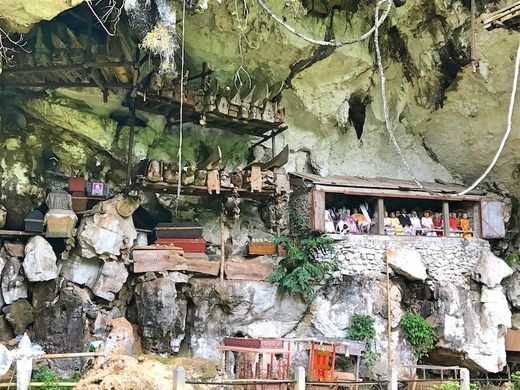 When a loved one dies, their body is often kept in the family’s home for months—sometimes years—before eventually being buried in graves carved into the sides of the caves or hung from the outside on cliffs. The corpses are periodically removed to perform the Ma’nene ceremony, where the corpses are cleaned, redressed, and exhibited in the village before being reinterred with things they will need in the afterlife: clothes, cigarettes, and money.
When a loved one dies, their body is often kept in the family’s home for months—sometimes years—before eventually being buried in graves carved into the sides of the caves or hung from the outside on cliffs. The corpses are periodically removed to perform the Ma’nene ceremony, where the corpses are cleaned, redressed, and exhibited in the village before being reinterred with things they will need in the afterlife: clothes, cigarettes, and money.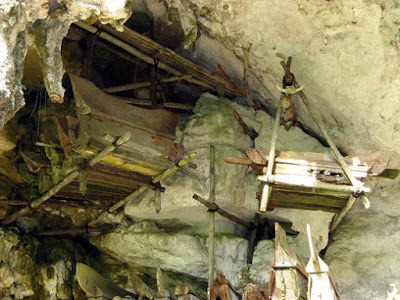
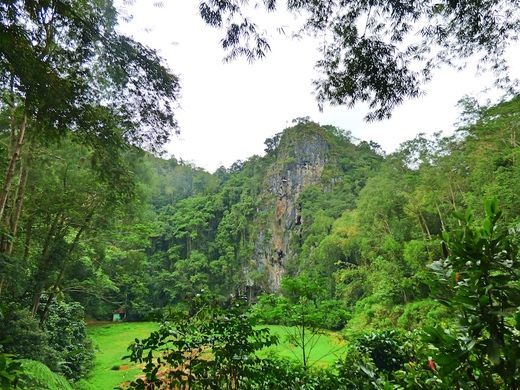
The funeral ceremony itself, known as Rambu Solo, is a multi-day affair filled with mourning, traditional dance, cock fights, and ritual animal sacrifice, followed by a huge feast. The higher the deceased’s status in society, the more extravagant and lengthy the ceremony.
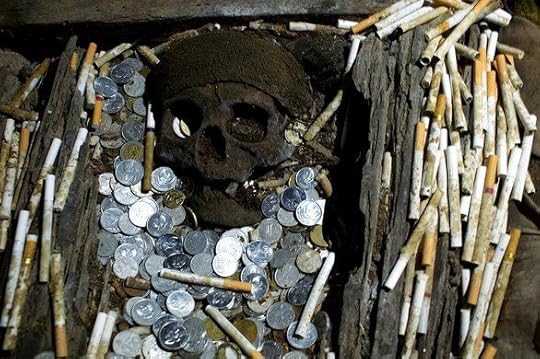
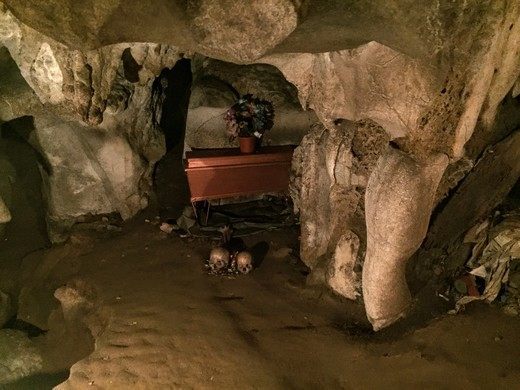
There are multiple cave burial sites that can be visited in Tana Toraja, but the most accessible to visitors is Londa. Locals rent lanterns at the entrances, and for an extra fee, will guide you through the tunnels, speaking about the residents.

Clancy's comment: Fascinating, eh?
I'm ...
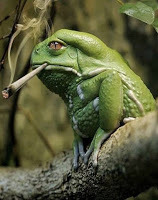
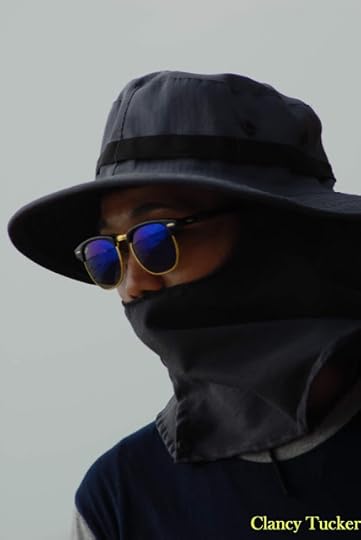
Published on October 22, 2019 13:13
October 21, 2019
22 October 2019 - GANVIE LAKE VILLAGE IN BRAZIL
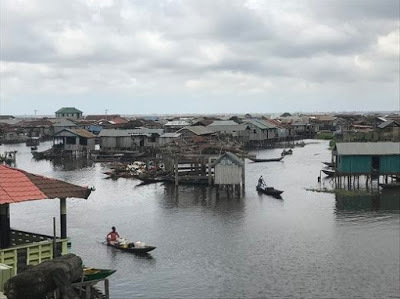
GANVIE LAKE VILLAGE IN BRAZIL
G'day folks,
Welcome to Africa's venice on stilts.
In colonial Brazil, runaway slaves and free natives formed communities deep within the Amazon as a means of escaping the brutality of Portuguese slavery. A combination of dense vegetation, waterways, and perilous wildlife and disease separated these societies from the slave traders who pursued them.
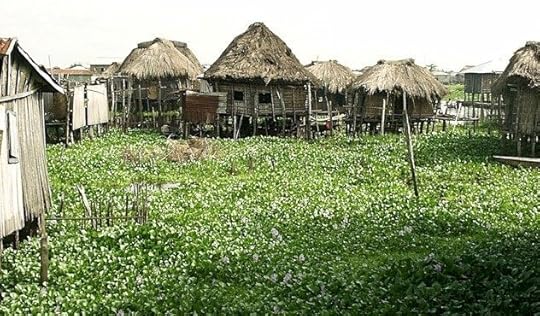
A small group of people outside of what is now Cotonou, Benin, took advantage of a different set of circumstances to evade capture by the Portuguese. At the time, the powerful West-African Fon tribe was hunting and selling other native tribesman to the Portuguese. While there were few physical impediments protecting the ancestors of today’s Ganvie village from outside attack, Fon religious practice forbade their raiders from advancing on any peoples dwelling on water, laying the groundwork for the Ganvie Lake Village.
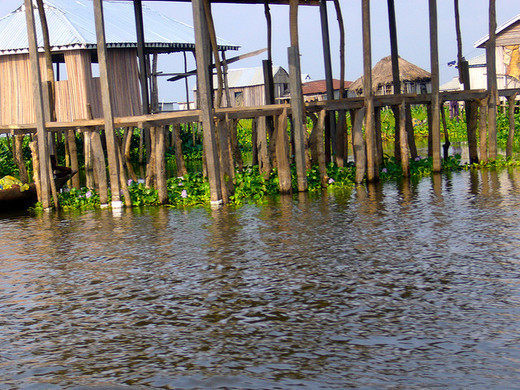
Ganvie is a village of roughly 20,000 people that stands on stilts in the middle of Lake Nokoue. The founders of the village fled there to avoid Fon warriors, and in the roughly 500 years that have passed since, Ganvie has developed an intricate and prosperous culture within the constraints of life on the lake.
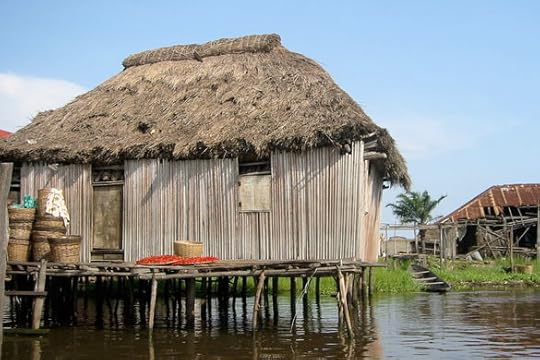
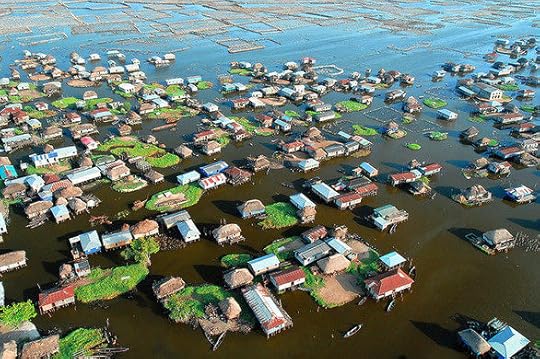
A school is the only one of Ganvie’s 3,000 buildings that exists on land, although a cemetery mound is currently under construction. The villagers of Ganvie travel almost exclusively by boat, and the few domesticated land-animals they maintain live on plots of grass that spring up from the water. Without a good supply of domesticated animals, Ganvie relies on a complicated network of underwater fencing to corral and farm various fish populations.
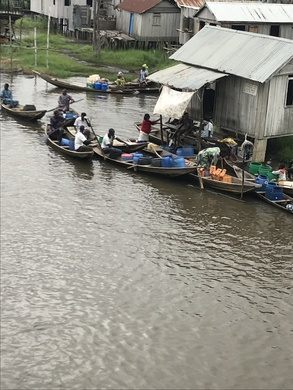
The village sits several miles from the nearest shoreline and is about a 4 hour journey from the capital. Ganvie is Africa’s largest lake village.
 Clancy's comment: Looks serene, eh?I'm ...
Clancy's comment: Looks serene, eh?I'm ...


Published on October 21, 2019 12:43



